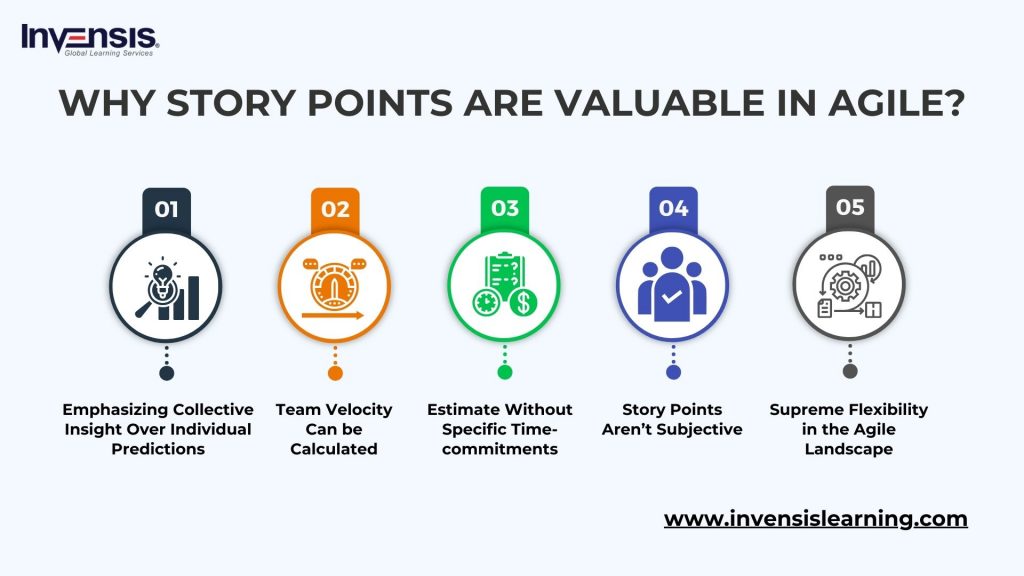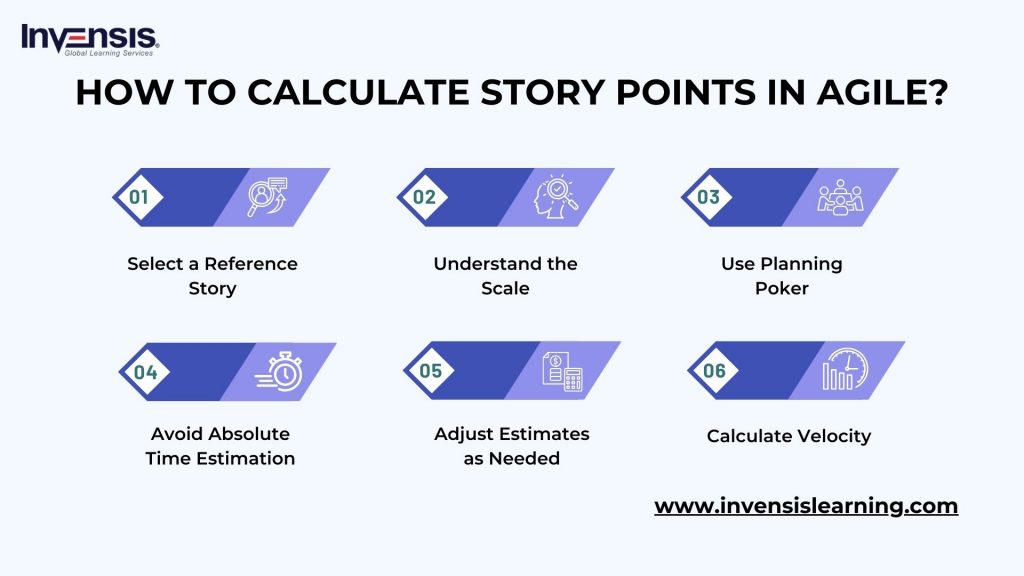
Ever wondered what Agile Story Points are? The term Story Points might give the impression of being a reward you earn during a fantasy video game, but that’s not the case!
Story Points constitute a pivotal Agile estimation technique, offering a relative gauge of the work and effort involved in a specific task. The problem arises from Agile guidelines encouraging these estimates without providing a concrete methodology for making them.
But fear not – in this article, we aim to explain the concept of Story Points, providing clarity on their significance and the process of calculating them within the Agile framework. Moreover, we have an exclusive bonus for you: a well-guarded secret that can help effectively implement Story Points in your Agile development projects.
So, this blog will be a comprehensive guide for you, educating you about the complexities of Story Points and equipping you with the knowledge to navigate Agile estimation confidently and precisely.
Table of Contents:
- What are Agile Stories?
- What are Story Points in Agile?
- Agile Story Points Estimation is a Team Sport
- Story Points vs. Hours
- Story Points vs. Planning Poker
- Story Points vs. Time-Based Estimation
- Smarter Ways to Estimate Agile Story Points
- Why Should Teams Use Story Points in Agile?
- Where To Use Story Points in Agile?
- How to Calculate Story Points in Agile?
- Scrum, Story Points, and Conversations
- Conclusion
What are Agile Stories?
Agile stories are the foundation of Agile development, but what exactly are they? Let us break it down:
In Agile development, an “Agile Story,” also known as a user story, is a concise description of a software feature from an end user’s perspective. It captures the functionality or requirement that provides value to the user or customer.
Here’s what makes Agile stories special:
- User-centric: They focus on what the user needs, not just technical specifications. Think of it as building a house for someone to live in, not just a collection of bricks and wood
- Small and focused: Each story is small enough to be completed within a single iteration (usually 1-2 weeks), keeping the project manageable and preventing feature creep
- Flexible and adaptable: As the project progresses and new information is learned, stories can be changed or refined to ensure the final product meets user needs
The format of an Agile Story is typically simple and follows the template:
As a [user type], I want [what the user wants] so that [benefit to the user].
For example:
- As a customer, I want to track my order in real-time so I know when to expect it
- As a content creator, I desire the capability to plan and schedule posts in advance, enabling me to optimize time management
Agile stories serve as a communication tool between stakeholders, including product owners, customers, and development teams, facilitating collaboration and a shared understanding of project requirements. These stories are often used in Agile frameworks like Scrum and Kanban to plan, prioritize, and deliver increments of work iteratively.
So, Agile stories are a great place to start if you’re looking for a way to build better software faster and with happier users.
What are Story Points in Agile?
Agile Story Points are a unit of measure used to estimate the relative effort or complexity of implementing a user story or a task. Rather than relying on traditional time-based estimates, such as hours or days, Agile teams assign Story Points to express the perceived difficulty or workload of a particular piece of work.
Story Points are a part of Agile estimation techniques and are crucial for planning and prioritizing tasks during the iterative development process. The relative nature of Story Points allows teams to focus on the complexity of the work rather than the specific time it might take.
- Allocate a numerical value to each item when estimating with Story Points
- The specific values chosen, like a modified Fibonacci series or a doubling sequence, vary among teams
- The key is in the relative values, not the specific numerical assignments
- For instance, a user story with two Story Points requires twice the effort of a one-point story
- It is approximately two-thirds of the effort needed for a story estimated at three points
- The actual numerical values (1, 2, 3, or 100, 200, 300) are inconsequential
- What matters are the proportional relationships and ratios between the assigned values
By understanding and using Agile Story Points effectively, your Agile team can navigate the software development journey with better planning and collaboration and focus on delivering valuable features to users.
Agile Story Points Estimation is a Team Sport
- All team members must actively participate, including designers, coders, testers, and deployers
- Each team member provides a unique perspective on product development and the effort required for user stories
- The emphasis is on the number of completed stories, not just the quantity created by the design team
- Quality is a collective responsibility, not solely the domain of testers
- The goal is to “create something in” rather than trying to “test in” quality
- Prioritizing everyone’s involvement and operational optimization can lead to longer project completion times
- An Agile, collaborative approach often results in faster outcomes, increased productivity, and enhanced value
Story Points vs. Hours
In Agile development, the debate between Story Points and Hours centers around how teams estimate and measure the effort required for tasks. The choice between the two methodologies represents a fundamental decision that impacts project planning, execution, and adaptability.
Story Points are a form of relative estimation where teams assign points to tasks based on their perceived difficulty or complexity relative to other tasks. This approach shifts the focus from absolute time to the difficulty-level of the work at hand.
The collaborative nature of assigning Story Points involves the entire team, ensuring that diverse perspectives contribute to a more comprehensive estimation. This method is well-suited for Agile environments that prioritize adaptability and collaboration.
On the other hand, estimating hours involves predicting the exact amount of time a task will take to complete. This method emphasizes the hours or days required, assuming a level of predictability and precision in estimation.
Hours often entail individual accountability, with team members responsible for meeting their estimated timeframes. While hours can provide a more precise prediction of time, they may be less flexible in accommodating changes during development.
Story Points vs. Planning Poker
Story Points and Planning Poker refer to two different aspects of Agile estimation techniques used in software development projects.
| Aspect | Story Points | Planning Poker |
| Definition | A unit of measure representing the relative effort or complexity of a user story or task | A collaborative estimation technique using a deck of cards with numerical values to collectively assess effort |
| Purpose | To provide a relative measure of effort for tasks, fostering efficient planning and prioritization | To engage the team in open discussions, share perspectives, and converge on a collective estimate for user stories |
| Unit of Measurement | Typically employs scales like Fibonacci numbers or t-shirt sizes for relative estimation | Uses a set of cards with numerical values, often Fibonacci, to express estimations collaboratively |
| Individual Estimation | Team members individually assign story points to tasks during estimation | Each team member selects a card simultaneously to reveal their estimate, promoting simultaneous input |
| Collaboration | Less collaborative as it involves individual estimations based on personal viewpoints | Involve team members in discussing their estimates openly, encouraging a shared understanding and collective decision-making |
| Speed | Generally quicker as it involves individual assessments, potentially leading to faster estimation sessions | May take longer due to discussions, but fosters a shared understanding and potentially more accurate estimates |
| Flexibility | More rigid as it relies on individual estimates, potentially limiting adaptability | More flexible due to discussions, allowing for adjustments and improved accuracy in estimations |
| Usage | Commonly used for straightforward estimations in teams familiar with the Agile process | Widely utilized in Agile environments for its collaborative approach, especially for complex or ambiguous tasks |
In essence, Story Points and Planning Poker is not a choice between two alternatives; rather, Planning Poker is a technique that falls under the umbrella of using Story Points for Agile estimation. Teams may choose to use Planning Poker or other methods to assign Story Points, depending on their preferences and the dynamics of their projects.
Story Points vs. Time-Based Estimation
Developers have devised various techniques to enhance project estimations, with two prevalent methods being Ideal Days or Time-based Estimations and Story Points. Project timelines can be formulated using either or both approaches.
Ideal days or time-based estimates calculate the total days or weeks required for the team to complete a task without interruptions, assuming undivided attention. This includes excluding factors like team meetings and other ongoing projects.
On the other hand, estimating Story Points is widely adopted in Agile projects, emphasizing adaptability, continuous learning, and teamwork. It gauges the work needed for a specific project or task list item, encompassing the implementation of new features, bug resolution, and significant modifications.
In Agile estimation, Story Points have become an alternative to traditional time predictions, detached from the project’s expected timeframe. Rather than focusing on the timeline, Story Points assist in evaluating the workload and requirements of the project or assignment.
Smarter Ways to Estimate Agile Story Points
- Individual tasks should not exceed 16 hours of work, or set a maximum limit, like 20 points if using Story Points
- Estimating larger tasks becomes challenging, especially for high-priority backlog items
- When an item surpasses the 16-hour (or 20-point) threshold, it signals the need for decomposition and re-estimation
- For lower-priority backlog items, provide rough estimates
- As the team progresses, evolving requirements and changes in the application can affect the accuracy of prior estimates
- Avoid estimating work prone to shifts and offer the product owner a rough figure for effective roadmap prioritization
Why Should Teams Use Story Points in Agile?
Teams in Agile use Story Points for several reasons to enhance their project management and delivery processes.
Here are some key reasons why Story Points are valuable in Agile:
-
Emphasizing Collective Insight Over Individual Predictions
Story Points encourage collaborative estimation, allowing the entire team to contribute to discussions and collectively determine the task effort required. This approach values the shared understanding of the team over-relying on individual predictions, leading to more accurate and inclusive estimations.
-
Team Velocity Can be Calculated
Story Points enable teams to calculate their velocity and the amount of work they can complete in a given iteration or sprint. This empirical data helps teams better understand their capabilities, plan future sprints more effectively, and establish a consistent and reliable pace for project delivery.
-
Estimate Without Specific Time-commitments
Story Points focus on the complexity and effort of tasks rather than specific time commitments. This allows for a more flexible approach to estimation, considering the inherent uncertainties in software development. Teams can prioritize delivering value without being constrained by rigid timeframes.
-
Story Points Aren’t Subjective
Contrary to common misconceptions, Story Points are not subjective. While they involve team discussion and collaboration, they are based on a relative scale, often using techniques like the Fibonacci sequence. This relative estimation helps compare and prioritize tasks based on their perceived complexity.
-
Supreme Flexibility in the Agile Landscape
Story Points provide supreme flexibility within the Agile framework. They can be easily adjusted as the team gains more knowledge or encounters changes in project requirements. This adaptability allows teams to respond effectively to evolving priorities and optimize their work dynamically during the project lifecycle.
Where to Use Story Points in Agile?
Story Points are employed in the Agile software development process, with estimates typically determined during product backlog grooming sessions. These sessions involve the development and testing teams reviewing the product backlog. It’s crucial that those responsible for the actual work, such as the development team members, conduct the story point estimations.
The involvement of the Scrum Master, product owner, engineering leads, or management is limited unless they actively contribute to coding tasks.
Since these individuals typically do not engage in coding activities, they need to step back and allow the professionals handling the work to determine the relative difficulty of each story point.
How to Calculate Story Points in Agile?
Calculating Story Points in Agile involves a relative estimation process that considers the complexity, effort, and uncertainty associated with user stories or tasks.
Here’s a step-by-step guide on how to calculate Story Points in Agile:
-
Select a Reference Story
In Agile estimation, selecting a reference story is a crucial step. This story serves as a benchmark for the team to understand the level of complexity and effort associated with different tasks. Having a well-defined reference point allows the team to compare and gauge the relative difficulty of other user stories or tasks during estimation sessions.
-
Understand the Scale
Understanding the scale involves defining a set of values that represent Story Points. Common scales include Fibonacci numbers (1, 2, 3, 5, 8, 13, etc.) and linear scales containing natural numbers such as 1, 2, 3, etc. Establishing a clear and agreed-upon scale helps the team provide consistent and comparable estimates, ensuring that everyone interprets the Story Points similarly.
-
Use Planning Poker
Planning Poker is a collaborative estimation technique where team members, including developers, testers, and stakeholders, use a deck of cards with story point values. Each participant selects a card representing their estimate, revealing all cards simultaneously. This method encourages open discussion and helps the team converge on a collective story point estimate through consensus.
-
Avoid Absolute Time Estimation
Agile estimation focuses on relative effort rather than absolute time. It’s important to avoid trying to equate Story Points directly to hours or days. Instead, the team should concentrate on comparing the complexity of tasks relative to each other. This approach promotes adaptability and acknowledges the inherent uncertainties in software development.
-
Adjust Estimates as Needed
Agile teams should be open to adjusting story point estimates based on evolving information, changes in requirements, or a better understanding of the work. Regularly reviewing and updating estimates ensures they remain relevant and accurate, contributing to improved planning and decision-making.
-
Calculate Velocity
Velocity is a metric used in Agile to measure the average number of Story Points the team completes in each sprint. Calculating velocity provides insights into the team’s capacity and helps predict how much work can be accomplished in future sprints. It’s a valuable tool for enhancing the accuracy of story point estimations over time.
Scrum, Story Points, and Conversations
Scrum, Story Points, and Conversations refer to the interplay between these elements within the Agile framework, particularly in software development. Let’s break down each component:
Scrum is an Agile framework designed to enhance collaboration, adaptability, and productivity in complex projects. It offers a structured yet flexible approach to software development, emphasizing iterative progress and continuous improvement.
Scrum includes roles such as Scrum Master, Product Owner, and Development Team and defined events like sprint planning, daily stand-ups, sprint review, and sprint retrospectives.
Story Points are a unit of measure in Agile used to estimate and express the relative complexity, effort, or size of user stories or tasks within a project. Rather than providing precise time estimates, Story Points focus on the inherent difficulty of a task compared to others.
Common estimation techniques include using Fibonacci numbers or t-shirt sizes (small, medium, large). Story Points contribute to the team’s ability to plan and allocate work in a way that aligns with Agile principles of adaptability and collaboration.
Conversations in the context of Agile development are essential for fostering collaboration and shared understanding within the team. Regular and open communication ensures that everyone involved, including the Scrum Team and stakeholders, clearly understands project goals, user stories, and potential challenges.
Conversations during events like Sprint Planning, Daily Stand-ups, and Sprint Review facilitate alignment, problem-solving, and continuous improvement.
Conclusion
Overall, understanding and effectively utilizing Story Points in Agile is paramount for successful project management and delivery. Through this overview and estimation guide, we’ve delved into the significance of Story Points as a relative measure of effort, emphasizing collective insights over individual predictions.
By selecting reference stories, establishing a clear scale, and employing techniques like Planning Poker, teams can foster collaboration and ensure consistent estimations. It’s crucial to steer clear of absolute time estimation and instead focus on the inherent complexity of tasks.
Ready to master Agile project management after exploring the intricacies of Story Points? Take your skills to the next level with Invensis Learning’s Agile Certification Courses. Enhance your understanding of Agile Stories, Story Points estimation, and Scrum dynamics.
















